We found ourselves a few meters underground, navigating through dark rooms on a dimly illuminated and elevated walkway. Below our path sat remnants and scraps of an ancient empire. Ornate tiles, carved by hand were piled in a corner. Tablets inscribed with names, dates and stories leaned against walls. As we continued through the structure, the size and importance of this building became clear.
The Roman Baths, situated in the heart of modern-day town of Bath, are some of the most impressive ancient Roman artifacts in all of Northern Europe.
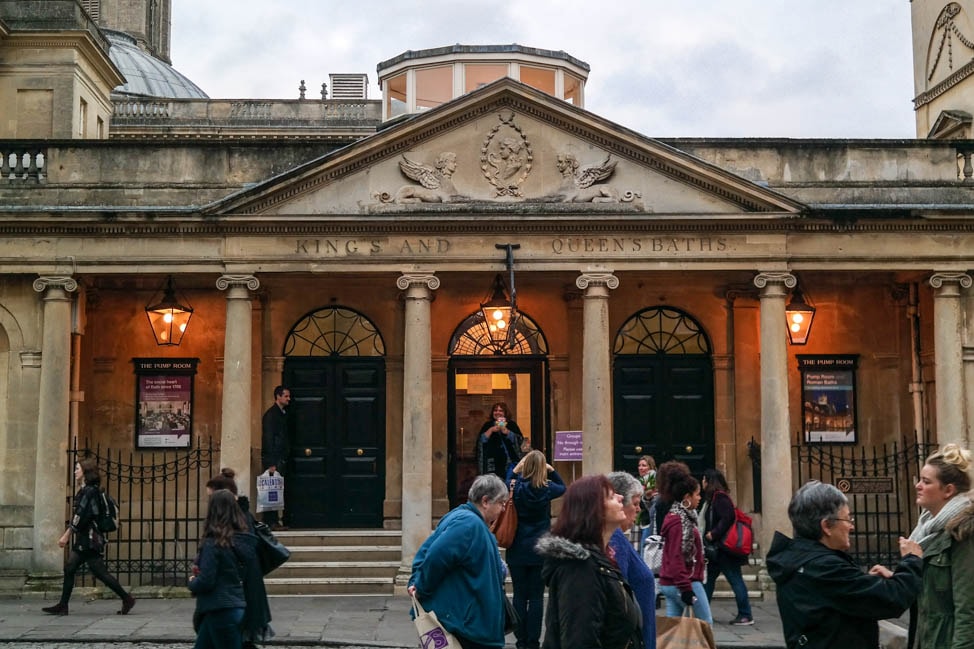
A visit to the town of Bath, England means an obligatory visit to the Roman Baths. I mean, how frequently do you come across a whole city named after an attraction? While there are lots of examples of destinations associated with underwhelming attractions (I’m looking at you Paris and the Mona Lisa), the baths lived up to the billing. Not only is the complex worth a visit while in Bath, but it deserves a special detour.
The center is considerably larger than I anticipated, and the self-guided audio tour takes a good 30-45 minutes to complete. After exiting the modern ticket office area, a quick right turn and there it is. The large, main bath is the centerpiece of the facility and from the perch on an elevated terrace, the sheer achievement of the place really hits home. I mean, it all looks old enough, but much of where we’re walking has been around for literally 2,000 years. The open-air arrangement of the space allows you to take in the gothic, stone structures of central Bath all around you, including Bath Abbey, which looms large overhead.
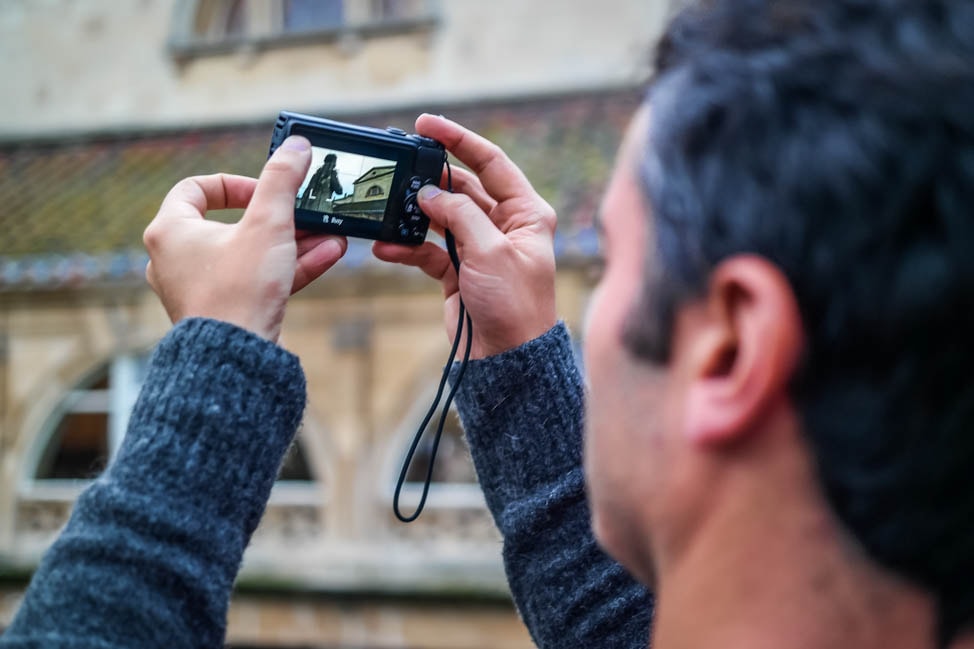
The baths are still active, fed by an underground stream of water that reaches about 50°C (122°F). Depending on the size of a particular pool, the resulting bathing temperature would vary. The main pool is lukewarm but not scalding. Despite the beautifully aqua water, the baths are no longer open to bathers. The lead pipes built by the Romans led to water contamination, so leave your swim trunks at home and just enjoy the history. In fact, you are not supposed to even touch the water, though you can walk right up to the edge.
Clearly, Julie is not good with rules.
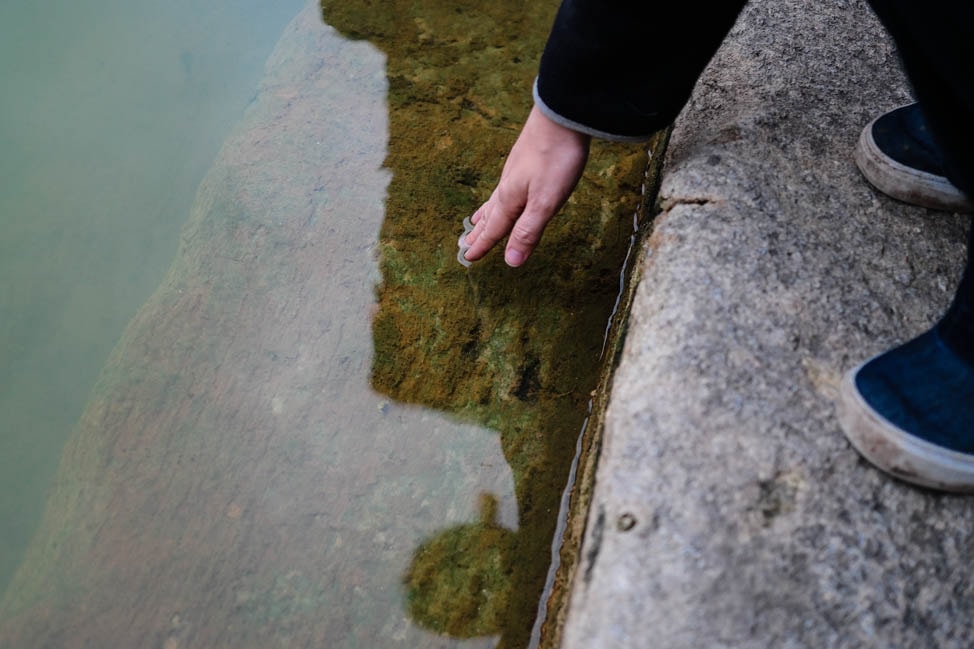
A majority of the visit to the Baths takes place underground, below the visible facility. Here, whole rooms have been meticulously excavated, exposing multiple pools and changing rooms used by the residents of the area when the baths were founded around 70 AD. Even almost 2,000 years later, the building and its decoration and architecture, is beautifully preserved. We particularly enjoyed seeing a series of rooms that are similar to the modern Scandinavian sauna experience – a blistering sauna room complete with heated rocks next to a ‘frigidarium’ cool pool.
It’s comforting to know that love of the sauna dates back literally thousands of years.
There are display cases throughout the tour as well, displaying many of the objects that were uncovered during the excavation. There is an entire wall of Roman coins found by archaeologists, many of which were found in the bottom of the baths (they found 12,000 coins overall). Weird that the ritual of throwing coins in a pool dates back that far, right?
Above all else, the Roman Baths complex was a religious place, during a time when life literally revolved around religion. In addition to gathering with friends and family to relax and exercise, there is also a well-preserved altar for ritual sacrifices.
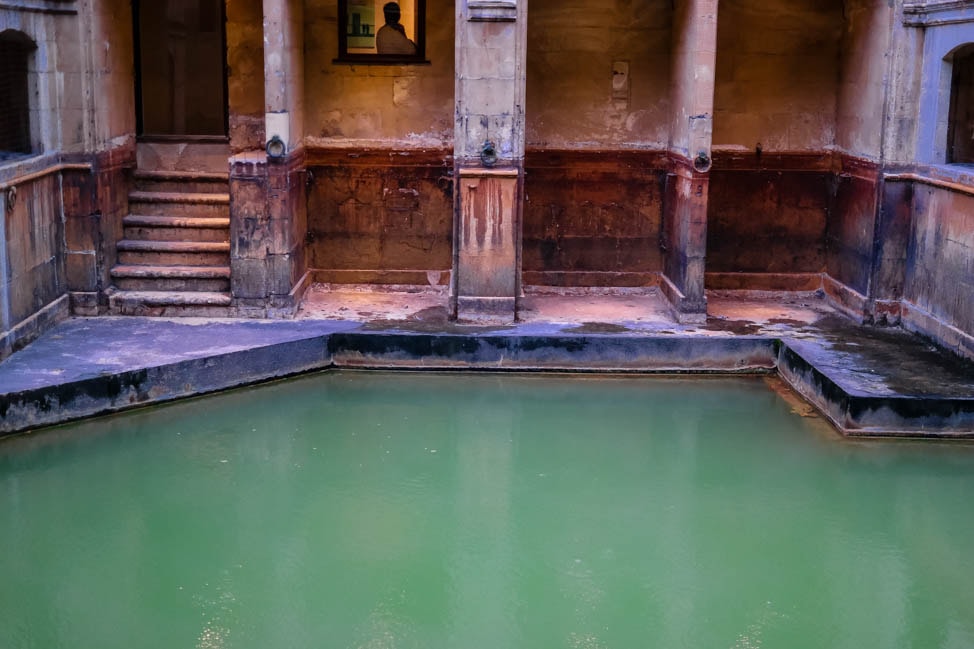
Prior to our weekend visit to Bath, we briefly considered skipping the Roman Baths. We had planned hikes with our beagle Basil and wanted to spend more time in the country than a town, since we get plenty of urban life back in London. Mother Nature had other plans for us apparently, as Julie mentioned a few days ago.
Even if the weather was perfect, skipping out on the Roman Baths would have been a grave error. For someone with even a passing interest in history, it is hard to not be impressed by 2,000 years of Roman history, buried underneath a town far, far removed from the center of the empire.
Ever been to the Roman Baths? What were your thoughts?


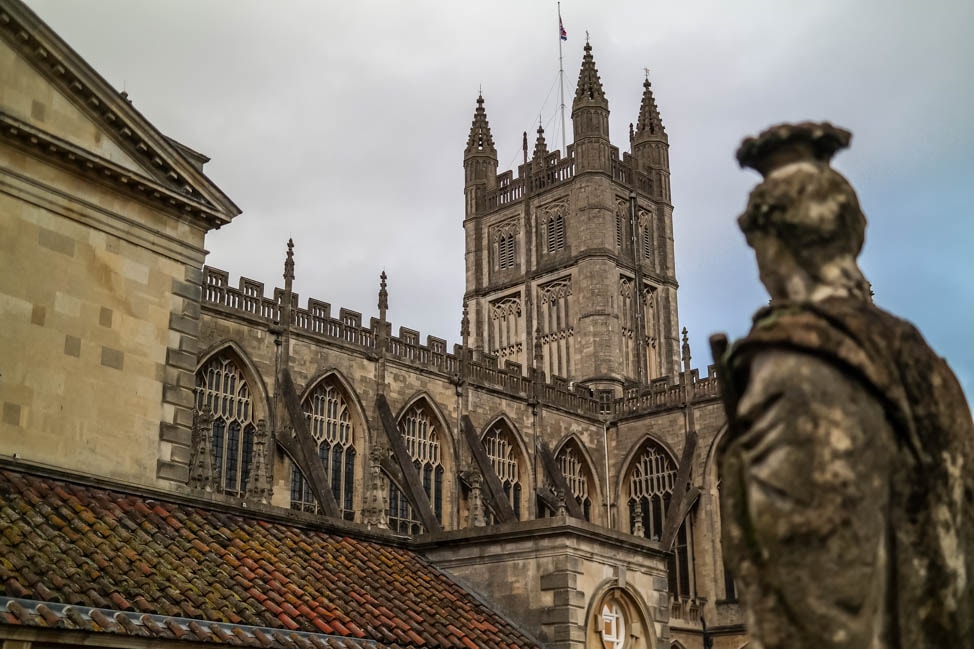










I’ve been too and thought they were great. Much bigger than you’d think they would be, like you said. And the colours in the water and the surrounding stones were beautiful.
Did you have a drink of the water at the end? Not horrible but definitely wouldn’t want to drink too much of it.
Stacey recently posted…Another UNESCO Site! The Historic Centre of Gjirokastra
The color is very vivid and intense. We were told on the tour that the water is contaminated, so I don’t know if they allow you to drink it!
This looks stunning! I love that it is so well preserved, although it’s too bad that the water isn’t suitable for bathing now, how much fun would that be?
The Roman baths are seriously well-preserved, and in some places, they’ve projected on the ruined walls what it would have looked like back then. Amazing!